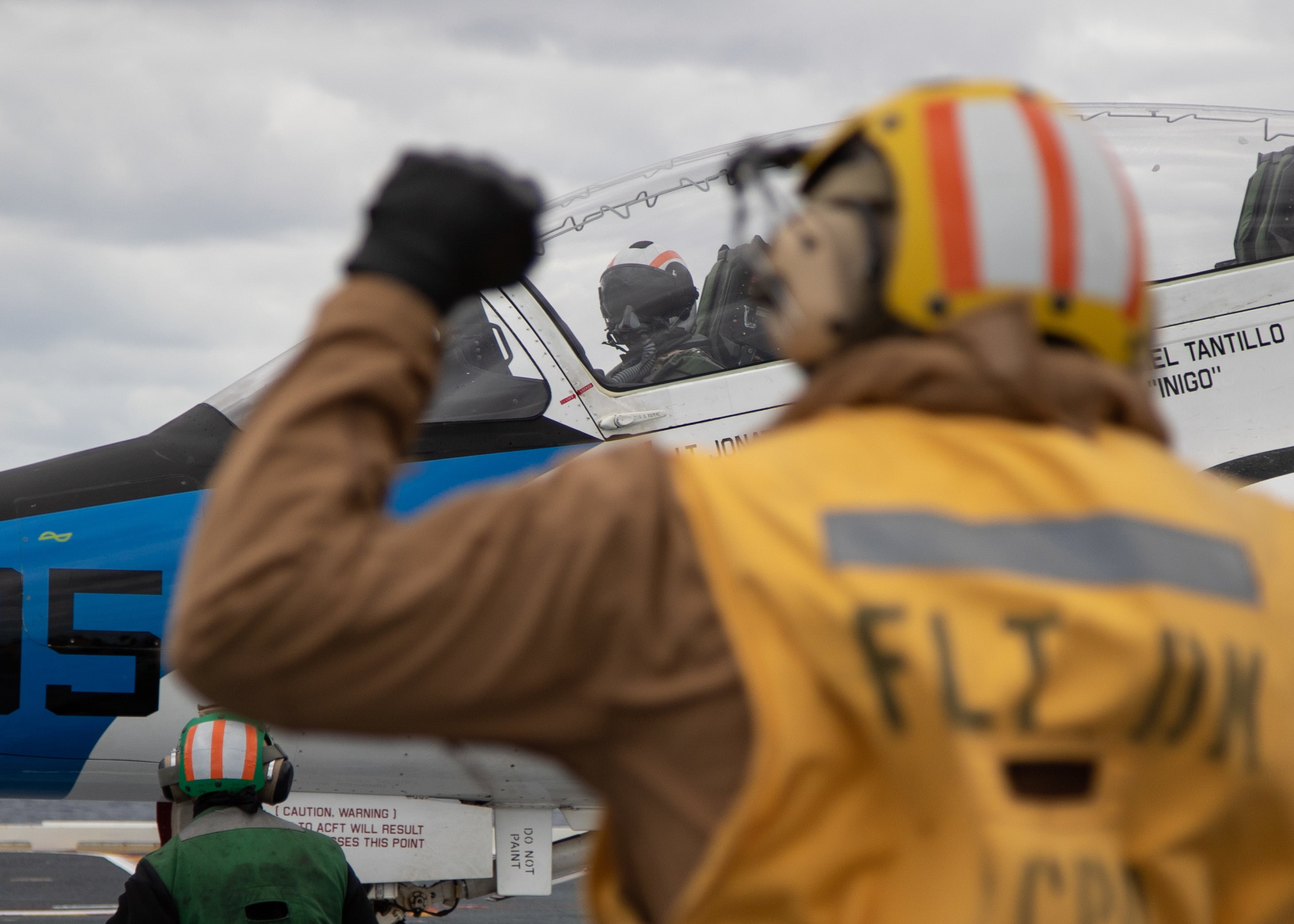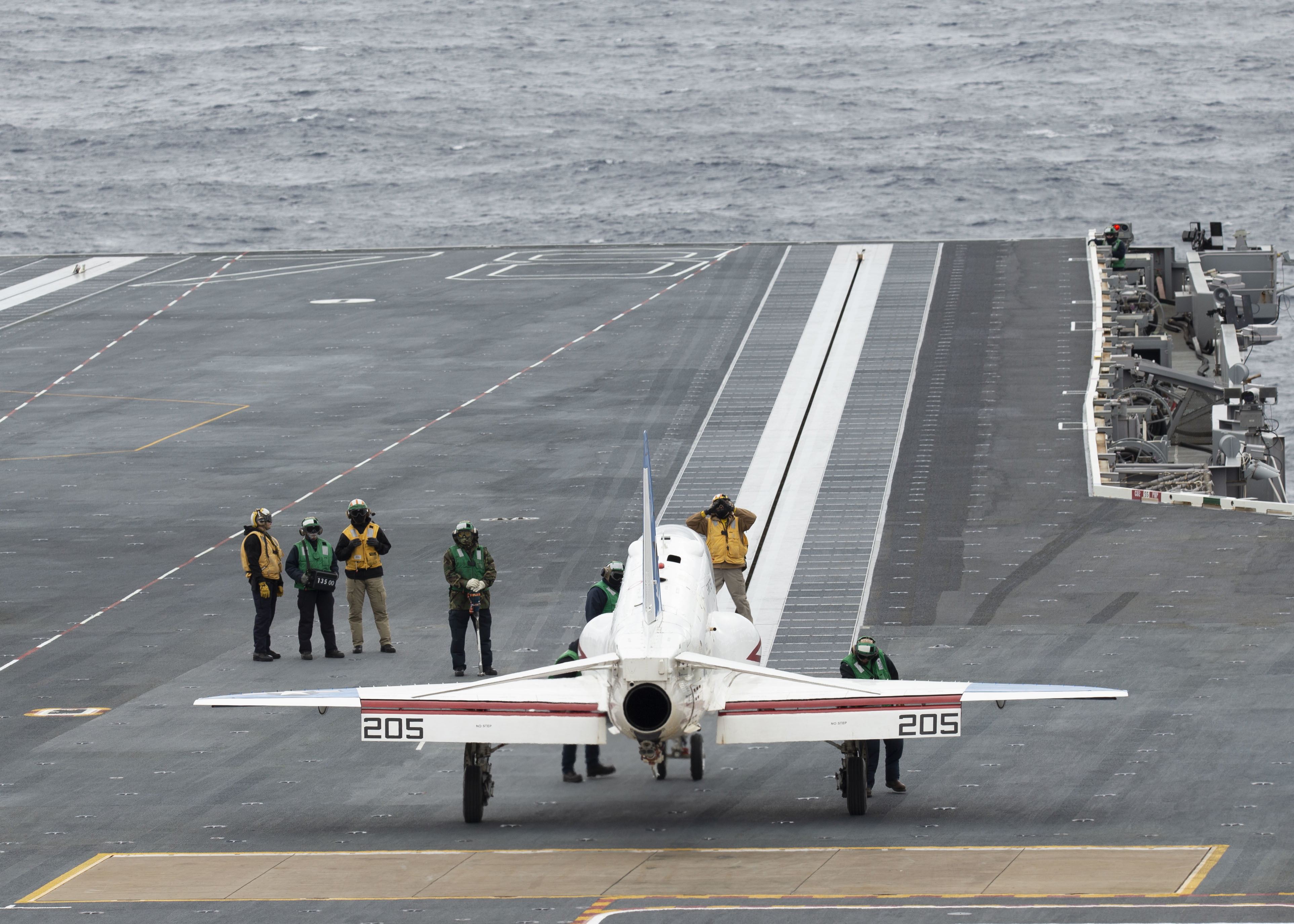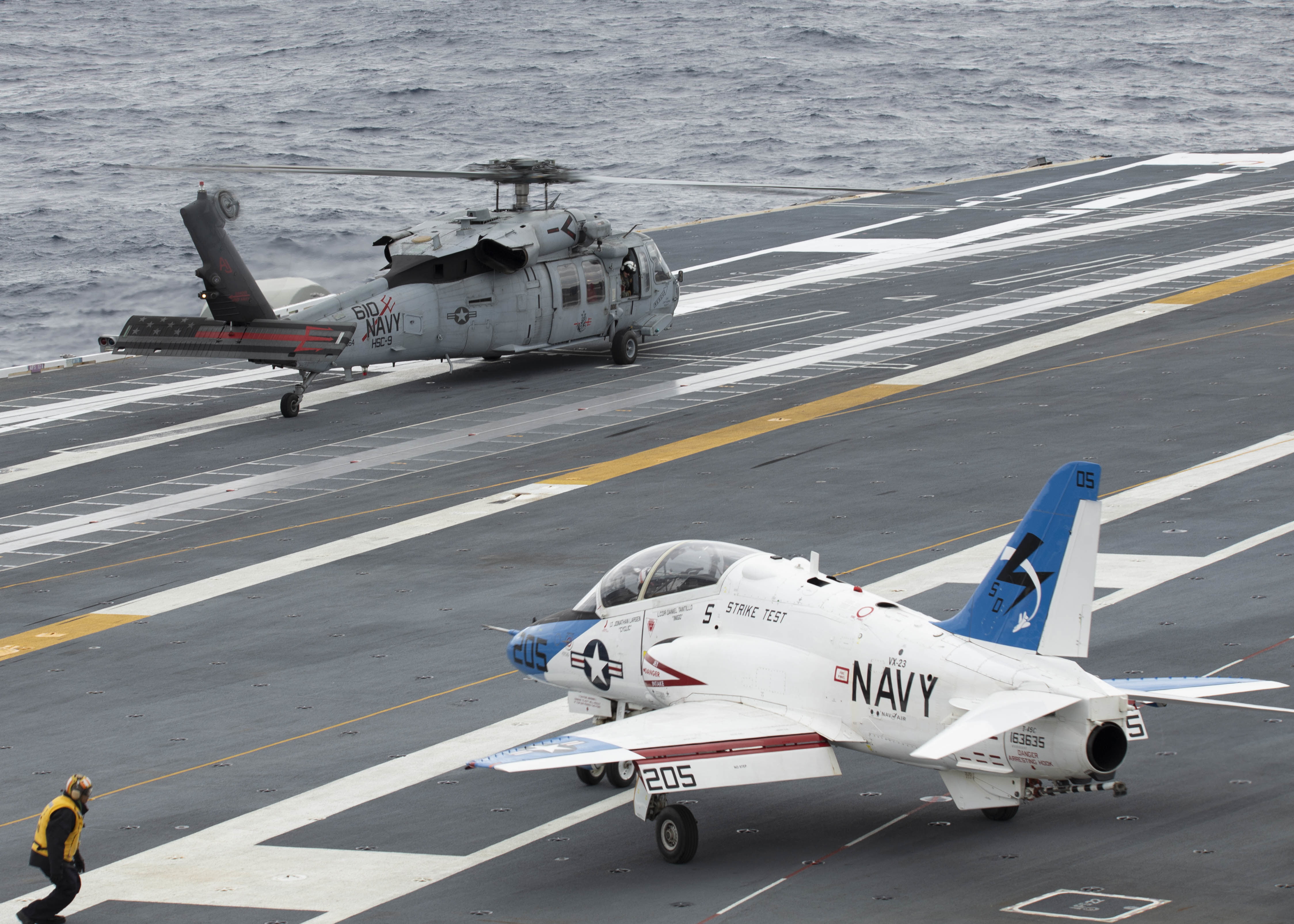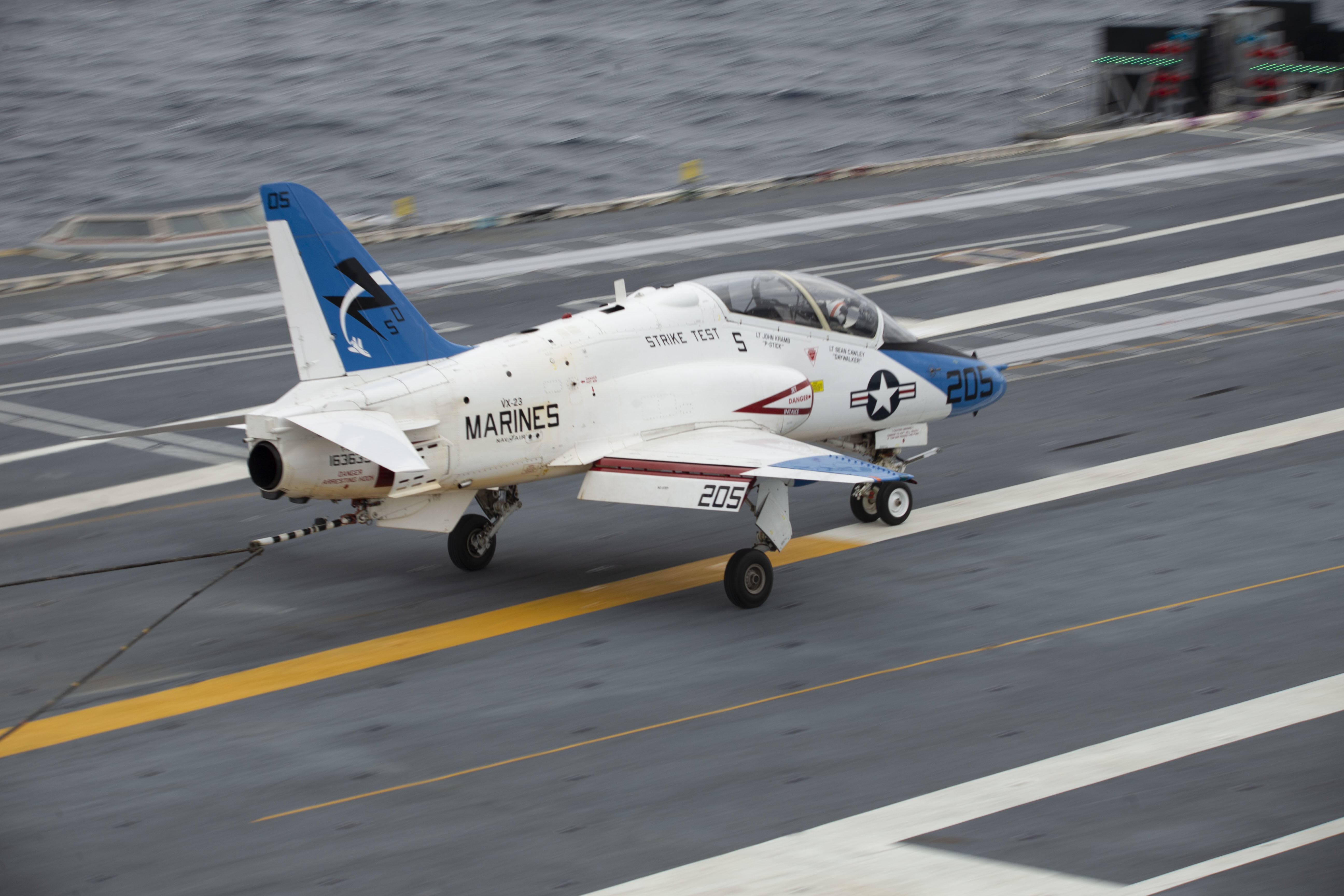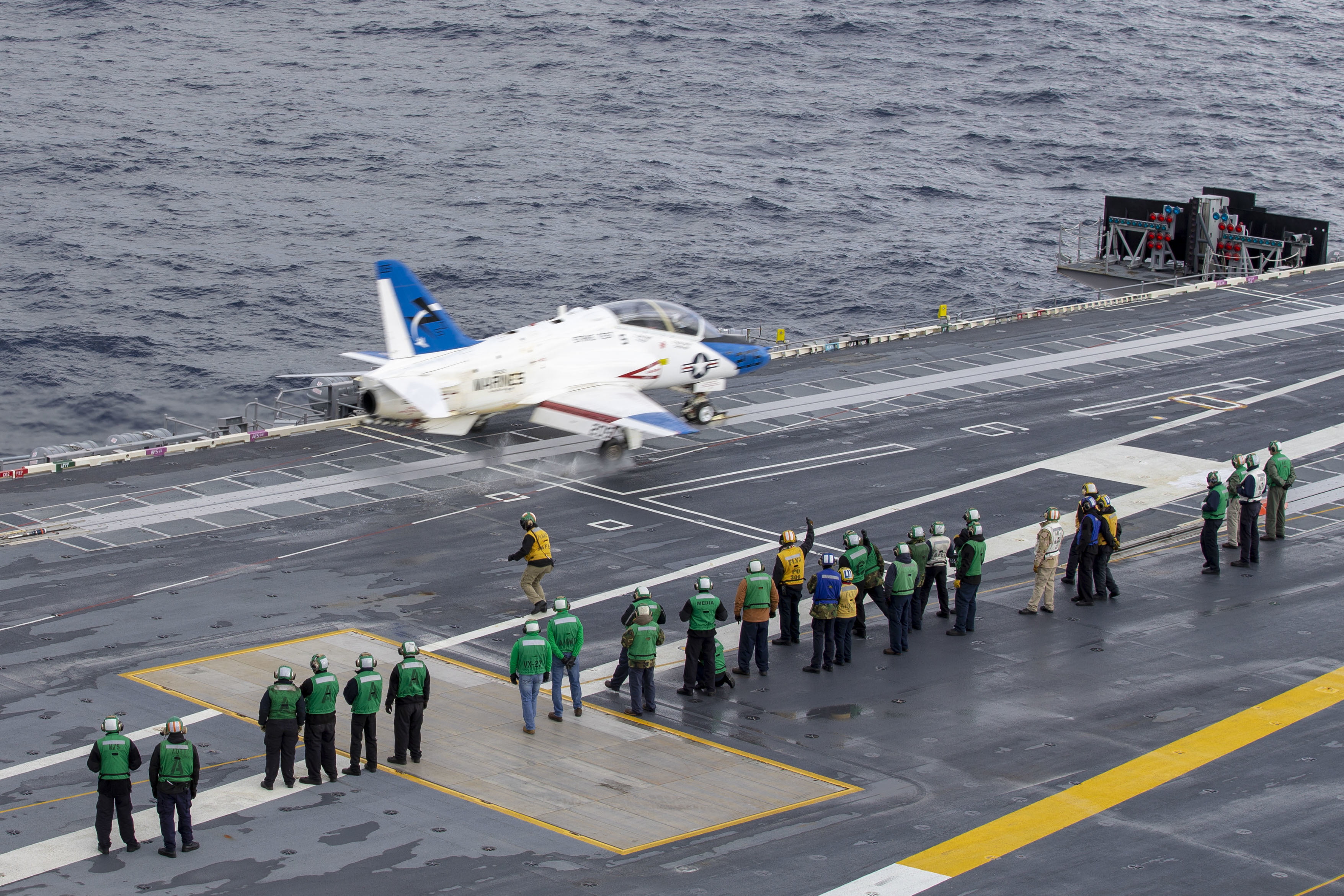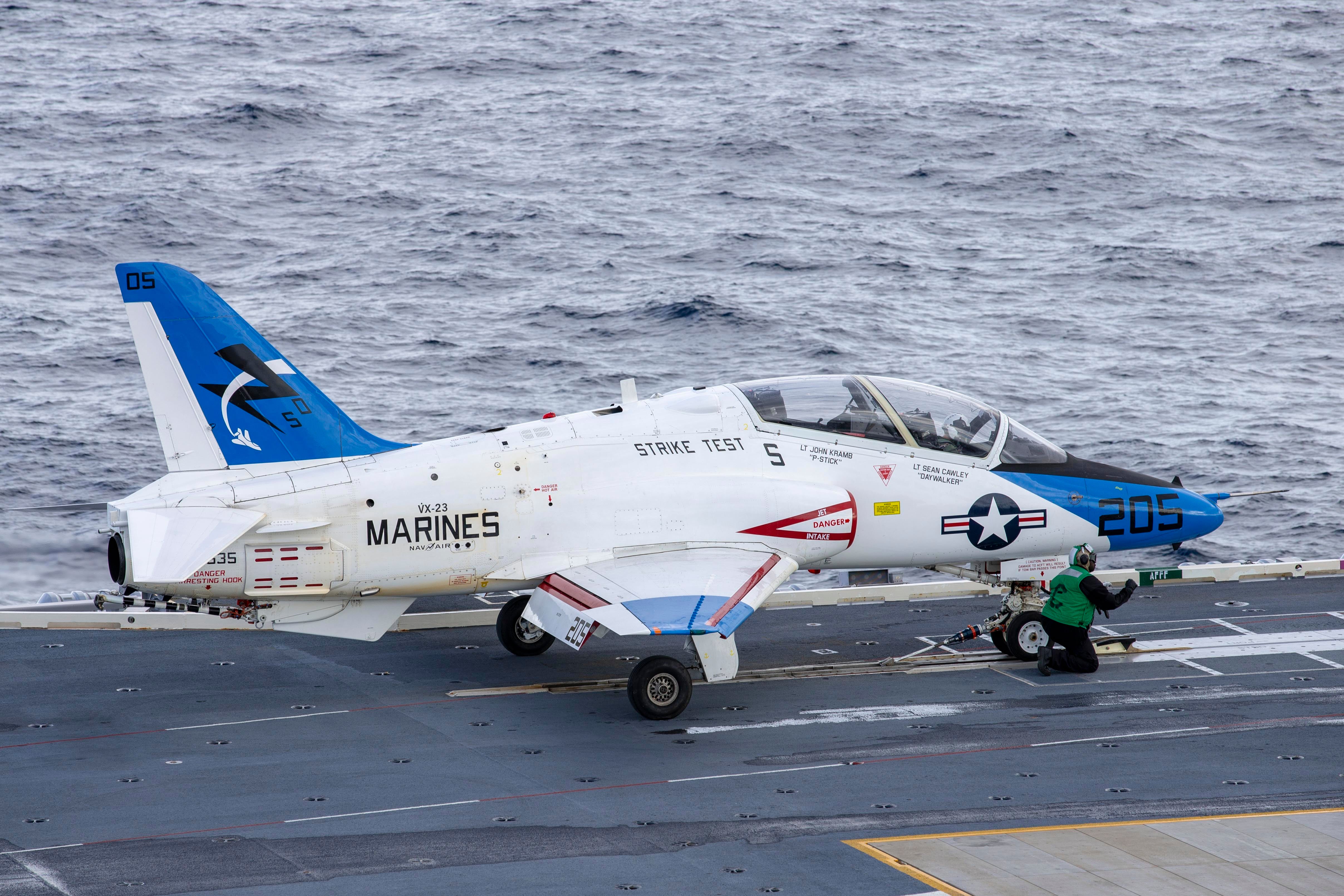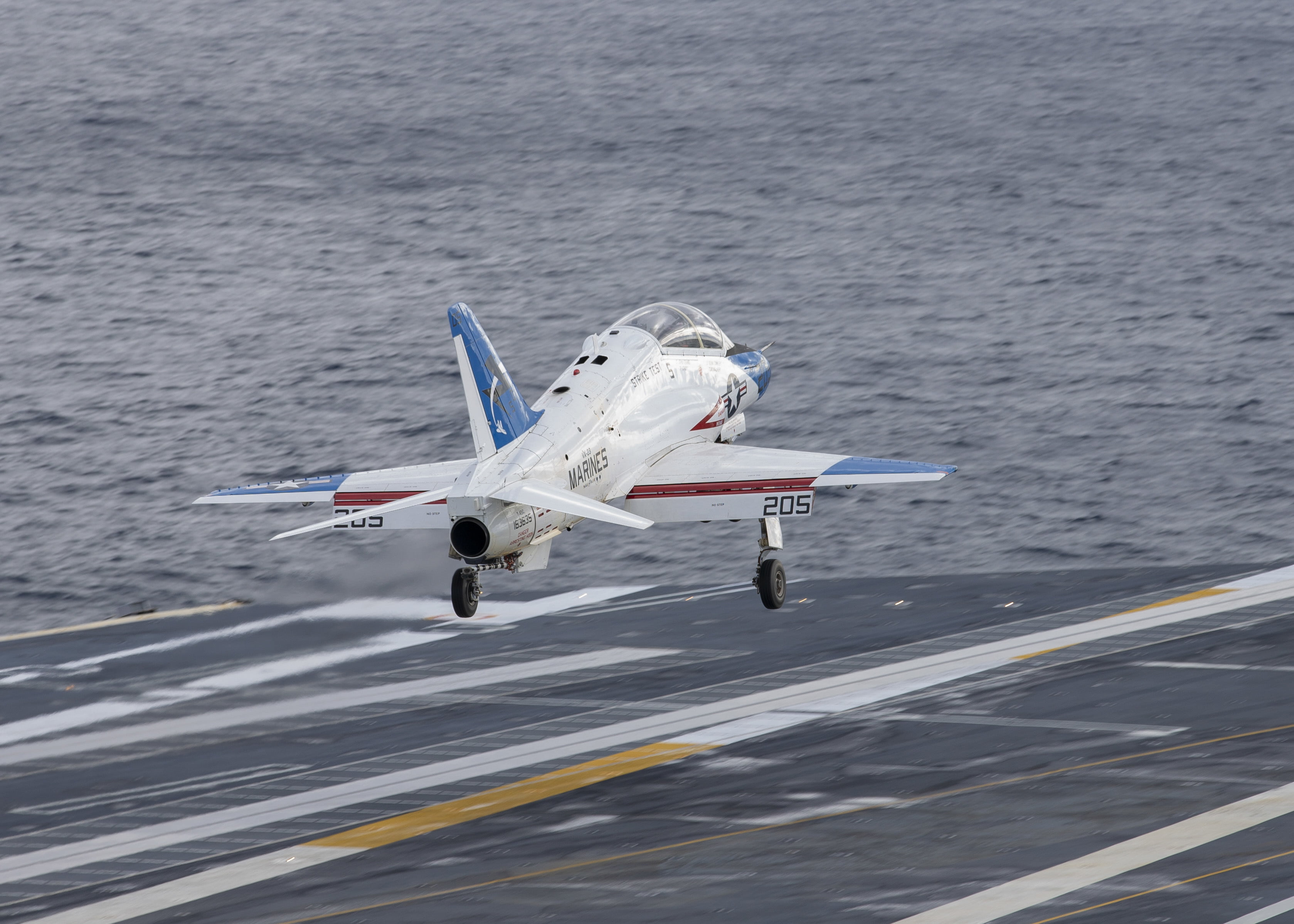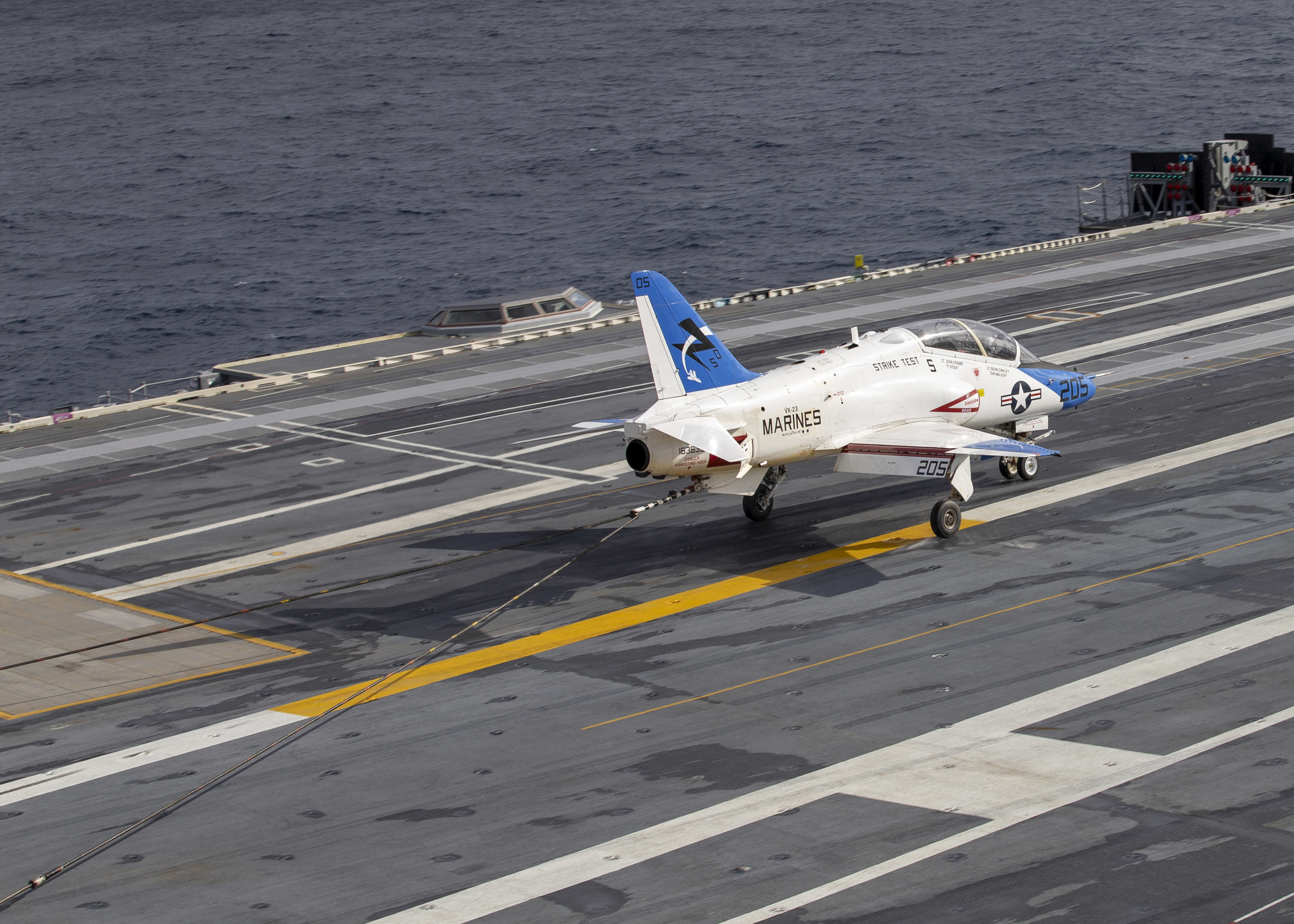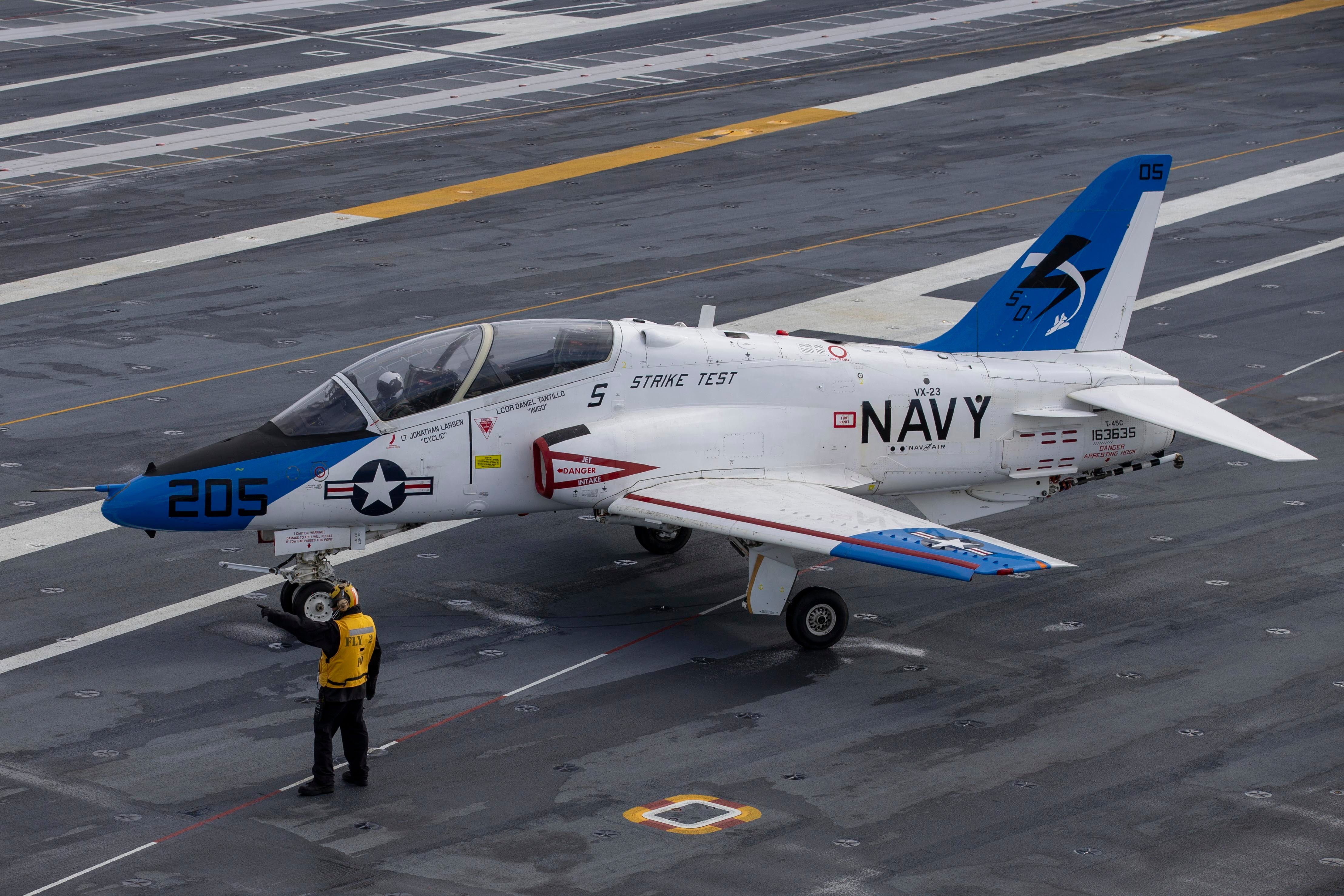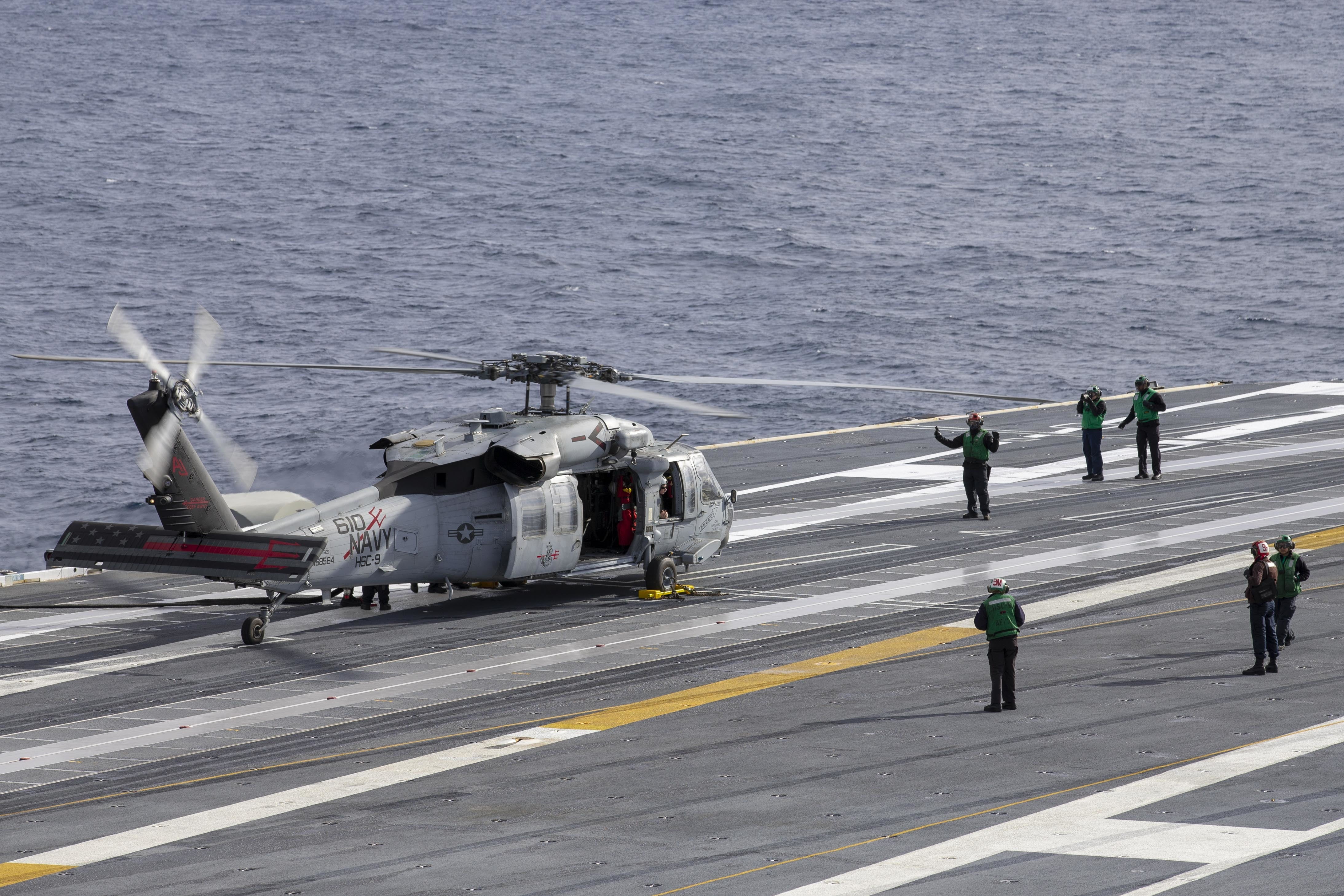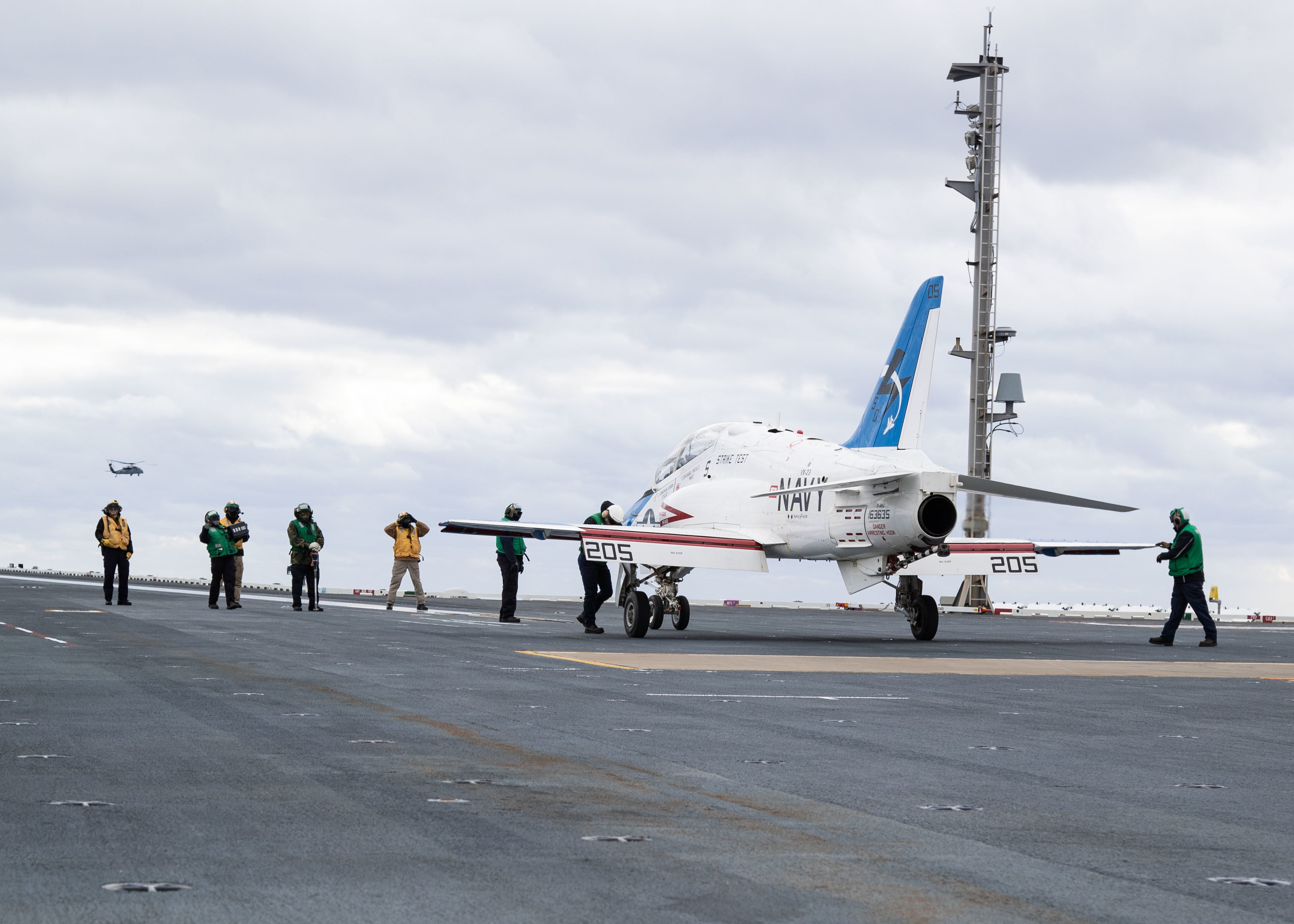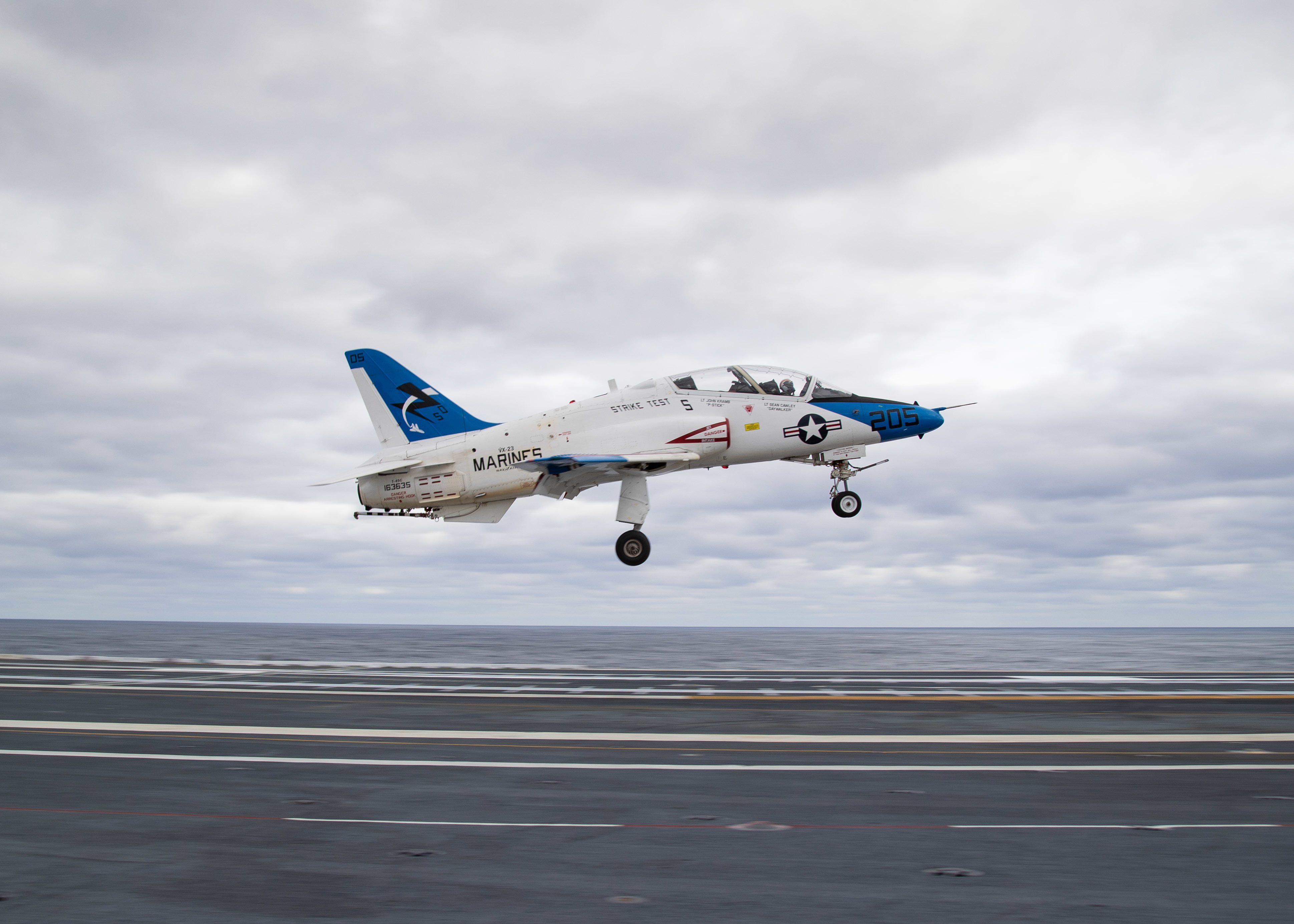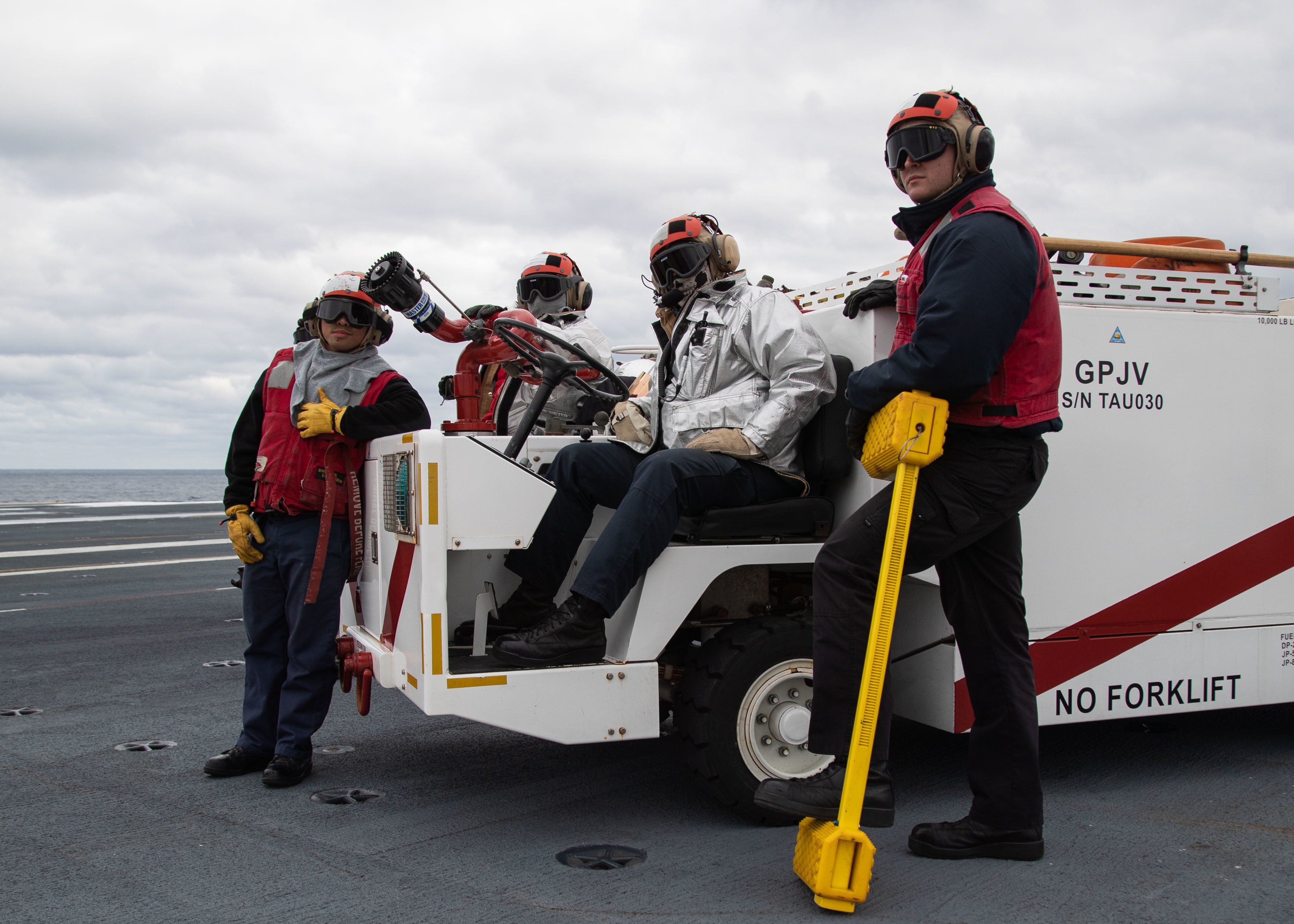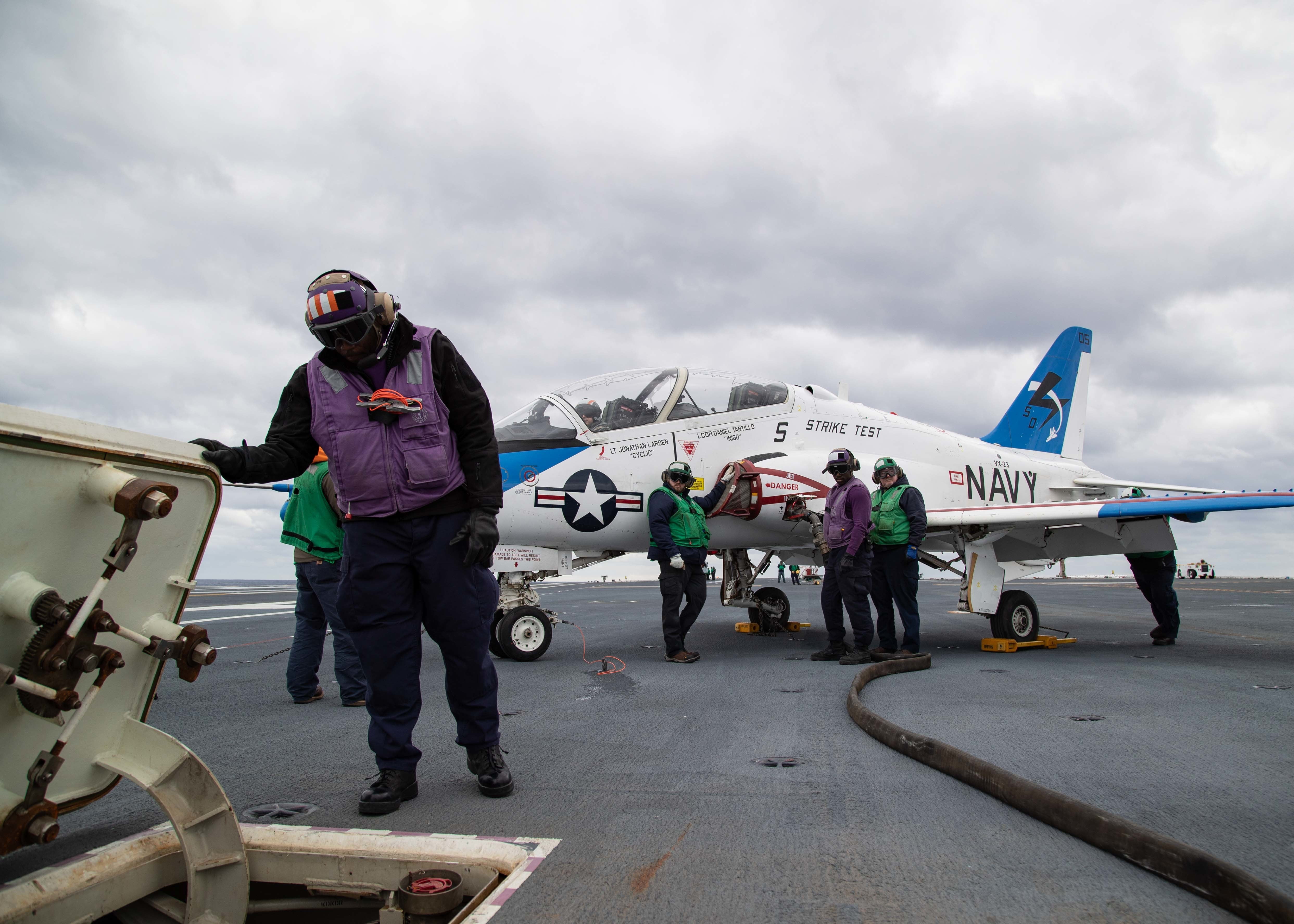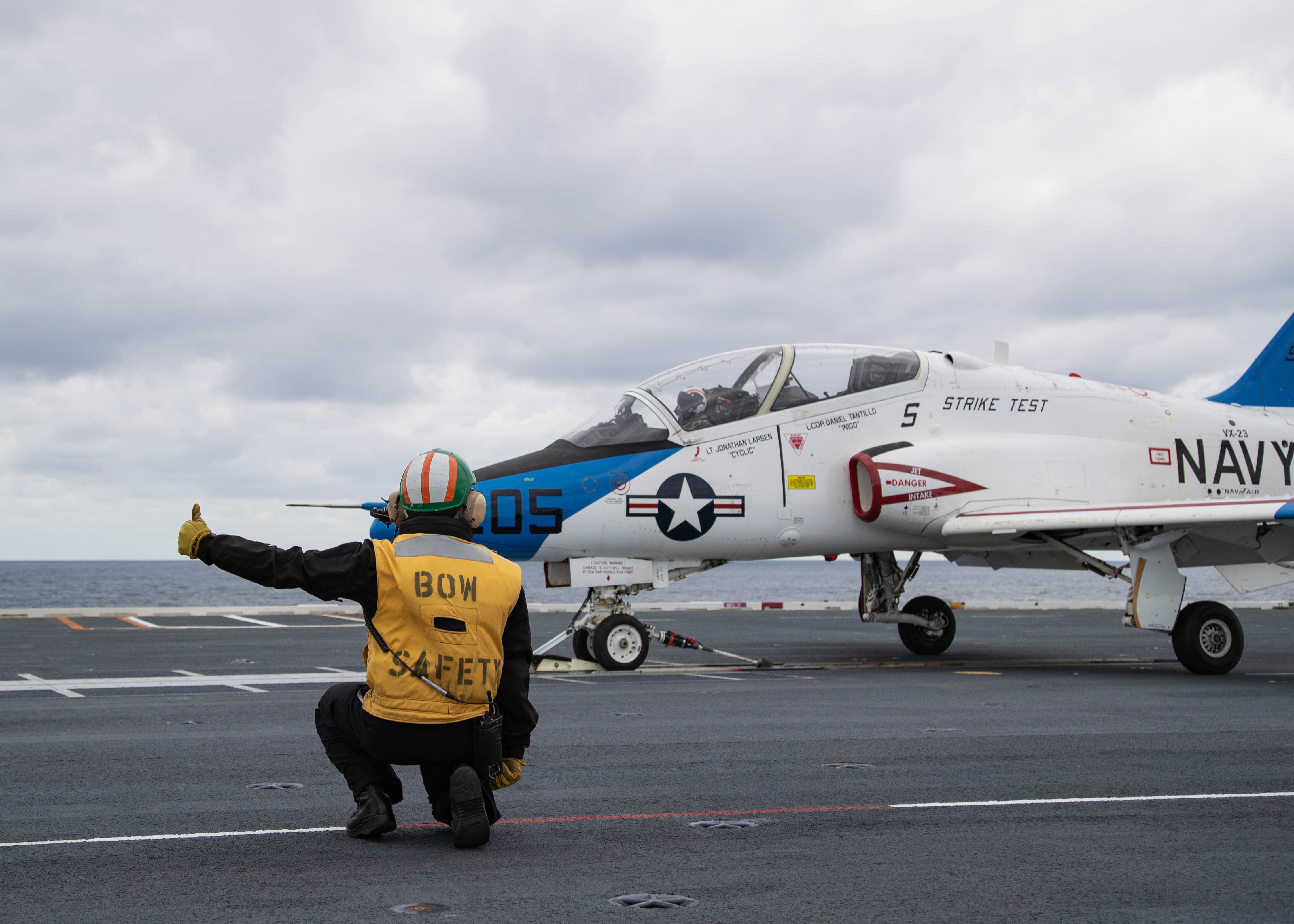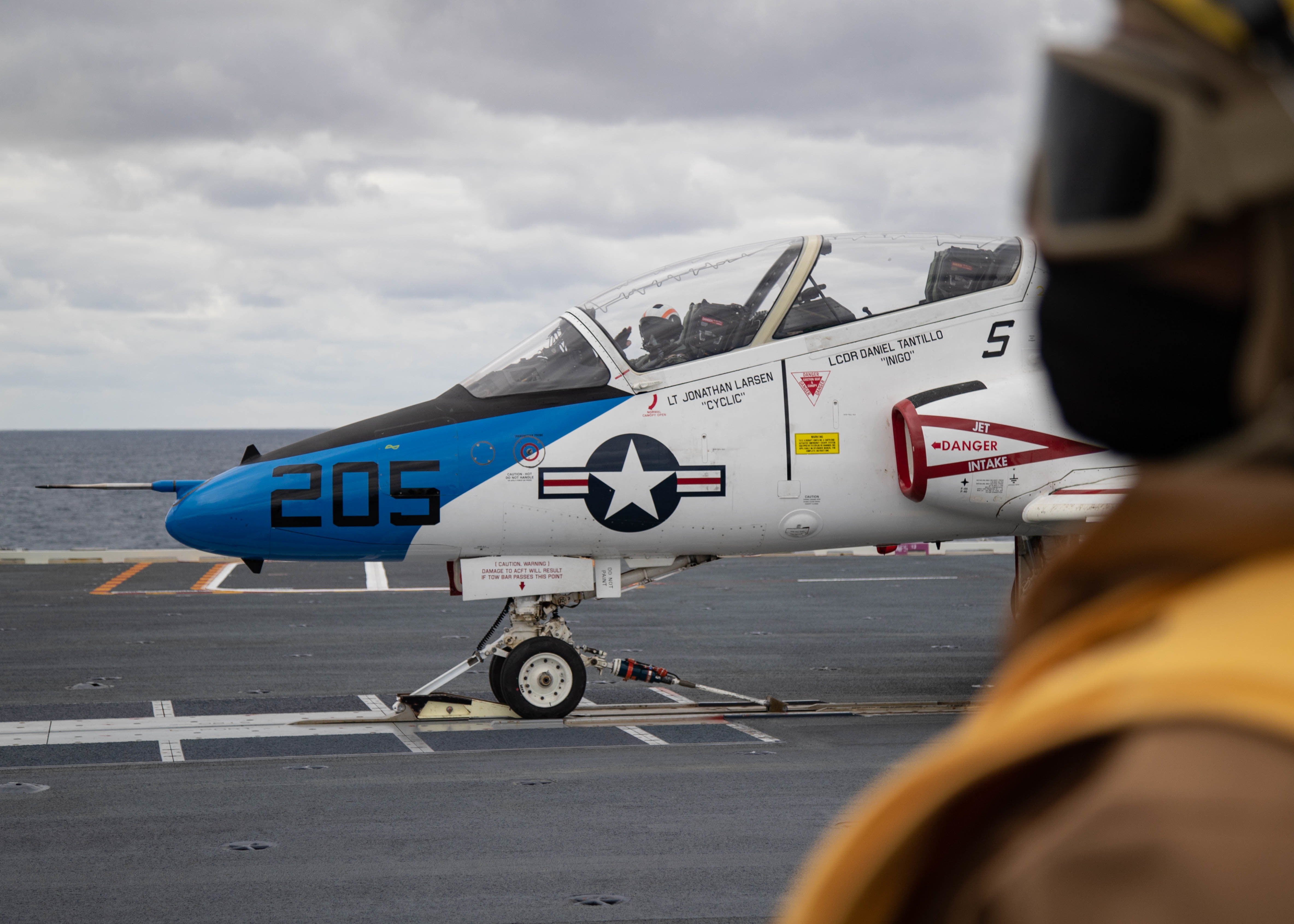The USS Gerald R. Ford is conducting Aircraft Compatibility Testing or ACT off the East Coast of the United States this month.
According to an article published by the US Navy on January 16, 2020:
ATLANTIC OCEAN (NNS) — The aircraft carrier USS Gerald R. Ford (CVN 78) departed its homeport of Norfolk, Jan. 16 to begin Aircraft Compatibility Testing (ACT) off the East Coast as the first aircraft, an E-2D landed, on board.
ACT continues the at-sea testing of Electromagnetic Aircraft Launch System (EMALS) and Advanced Arresting Gear (AAG) – two Aircraft Launch and Recovery Equipment (ALRE) systems unique to Ford – previously conducted in 2018 by the F/A-18 E/F Super Hornet. During this upcoming phase of ACT, compatibility testing will include: T-45 Goshawks, F/A-18 E/F Super Hornets, and E/A-18G Growlers from Air Test and Evaluation Squadron 23 (VX-23); and E-2D Advanced Hawkeyes and C-2A Greyhounds, from Air Test and Evaluation Squadron 20 (VX-20). This will be the first time the T-45, E-2D, C-2A and E/A-18G aircraft will launch and recover from the Navy’s newest aircraft carrier.
“Ford is now proving all of the test-work accomplished at Joint Base McGuire-Dix-Lakehurst, N.J. over the last year-and-a-half, that we can fly fleet aircraft as a ship with EMALS and AAG integrated,” said Cmdr. Mehdi “Metro” Akacem, Ford’s Air Boss. “This is very exciting, and it is the culmination of a year-and-a-half of training, anticipation, and teamwork.”
Ford last flew aircraft in January 2018 and has 747 launches and arrestments to date. This round of testing will allow the crew to further test the improvements made during its post-shakedown availability (PSA) at Huntington Ingalls Industries-Newport News Shipbuilding while also allowing the crew to gain experience on these unique systems.
“This is one of the reasons why I love the Navy,” said Aviation Boatswain’s Mate Airman Xavier Pettway, from Jacksonville, Fla. “It’s crazy to think about. Even when we were doing drills on the flight deck my heart was beating so fast, and now, we’re doing it for real. It’s unreal, but I’m ready for it.”
EMALS is the launch system of choice for Ford and all future Ford-class aircraft carriers. Its mission and function remains the same as traditional steam catapults; however, it employs entirely different technologies. EMALS uses stored kinetic energy and solid-state electrical power conversion. This technology permits a high degree of computer control, monitoring and automation. The system will also provide the capability for launching all current and future carrier air wing platforms – lightweight unmanned to heavy strike fighters.
The software-controlled AAG is a modular, integrated system that consists of energy absorbers, power conditioning equipment and digital controls, with architecture that provides built-in test and diagnostics, resulting in lower maintenance and manpower requirements. AAG is designed to provide higher reliability, increased safety margins and reduce the fatigue impact load on aircraft. Similar to EMALS, it will also allow for the arrestment of all current and future air wing assets.
The information captured during ACT will continue to inform improvements and modifications for Ford and follow-on Ford-class of aircraft carriers.
For Rear Adm. Roy “Trigger” Kelley, Commander, Naval Air Force Atlantic, a successful ACT also serves as an important stepping stone towards Ford’s eventual Flight Deck Certification, expected to take place in March.
“Once Ford’s flight deck is certified, she will become my go-to aircraft carrier responsible for conducting carrier qualifications on the East Coast for the Navy’s newest Fleet and Training Command aviators,” said Kelley. “This will be a significant boost to aircraft carrier availability and overall Fleet operational readiness.”
Rear Admiral James P. Downey, Program Executive Officer for Aircraft Carriers emphasized that Ford’s ACT marks yet another successful milestone on the path to recertification of the flight deck and full mission capability.
“Acting SECNAV was crystal clear when he directed all hands on deck, and I can tell you that everyone — from the highest levels of government to the crew on the deck plates and our industry partners — is laser focused on USS Gerald R. Ford being ready to enter fleet service,” said Downey.
Tamara Scott in an article published published on January 23, 2020 added further details.
NORFOLK, Va. (WAVY) – The USS Gerald R Ford is back on the water this month as a part of the Make Ford Ready initiative launched by the U.S. Navy.
After reports of mechanical and technological issues, the initiative is working to get the carrier ready for anything — That includes aircraft compatibility testing.
10 On Your Side’s Tamara Scott went aboard the ship to see what that training looks like.
Commanding Officer Capt. JJ Cummings runs a tight ship aboard the USS Gerald R Ford.
Especially while they are in the midst of aircraft compatibility testing.
“So we have this motto on our ship that we’ve been living to since the day I got here. It’s ‘we must prepare to deploy with our carrier strike group, prepare to savage the enemy, we will be well-trained and ready to fight, we are warship 78,’” he said.
The aircraft landings aboard the ship are testing the Electromagnetic Aircraft Launch System (EMALS) and Advanced Arresting Gear (AAG), two systems unique to the carrier.
“Getting Ford ready, test and trial. We have a lot of stuff since we haven’t had the time to exercise to its full extent, so we’re working every day to figure that out. [We] get to see how systems operate, how to develop operating procedures, tactical procedures. Get our manning right, get stuff rolling. When we see our deployment, we know what parts we need, people we need, how we’re going to execute and get weapons and fuel to our aircraft, so we’re working there,” Cummings explained.
Several different types of aircraft will be used during the testing, including T-45 Goshawks, F/A-18 E/F Super Hornets, and E/A-18G Growlers from Air Test and Evaluation Squadron 23 (VX-23); and E-2D Advanced Hawkeyes and C-2A Greyhounds, from Air Test and Evaluation Squadron 20 (VX-20).
In all the training, there have also been great successes.
In the last few days, the aircraft saw its first-ever landing of an E-2D Hawkeye, a C-2A Greyhound, a T-45 Goshawk, and the E/A 18G Growler.
Mehdi Akacem, who directs flight operations, says everything has been running smoothly and they are on the right track.
“We’re still at the base of the learning curve. There is lots of demonstration of reliability and repeatability that has to happen, and the Navy has got to plan over many thousands of cycles of launches and recoveries to ensure that they continue to become more reliable,” sAkacem said.
Cummings said that is for one reason.
“Safety — 100-percent safety to make sure that an aircraft is fully-loaded, fully-gassed, and can launch and recover in a variety of environments,” he said.
Cummings says these historic landings and successful training exercises makes it easy for him to feel pride.
“A lot of work has come to get us here today. I just think that from decades of work, decades of work on the resting gear, decades of work to put our heads together for a new design — and then 15 months of work in the post-shakedown ability to … tighten up some of the systems that need a little bit of smoothing out — … to see it all come together to do what the ship was designed to do, launch aircraft, [there’s] extreme pride for our crew and for the aviators… We are pumped to keep pushing,” he said.
The training will continue until the end of the month, but will serve as a training and testing environment for future air operations aboard the USS Gerald R Ford.
Also, see the following:
The USS Ford in the U.S. Navy’s Future: Enabling the Distributed Force
The USS America, CVN-78 and HMS Queen Elizabeth: Crafting Capabilities for 21st Century Operations
The Sea Services Transform Their Reach, Punch and Impact in the Extended Battlespace


